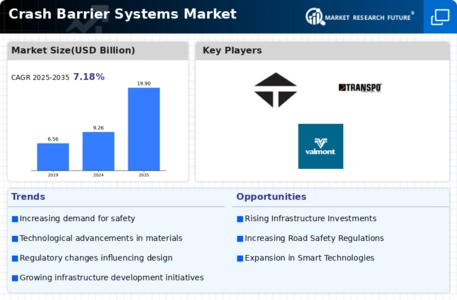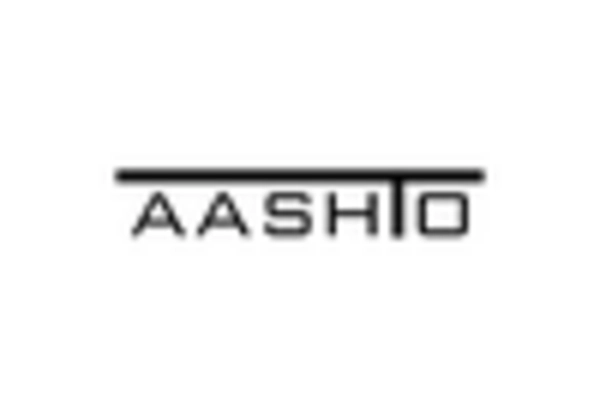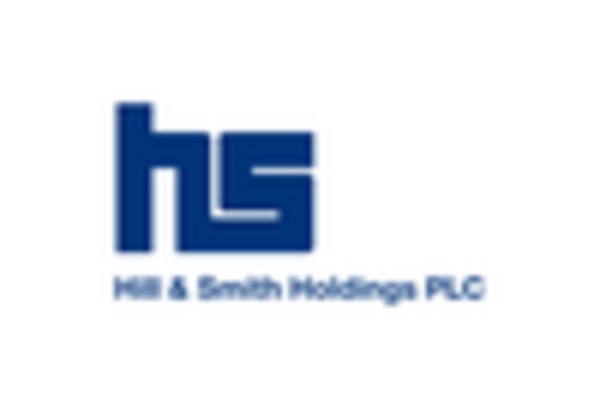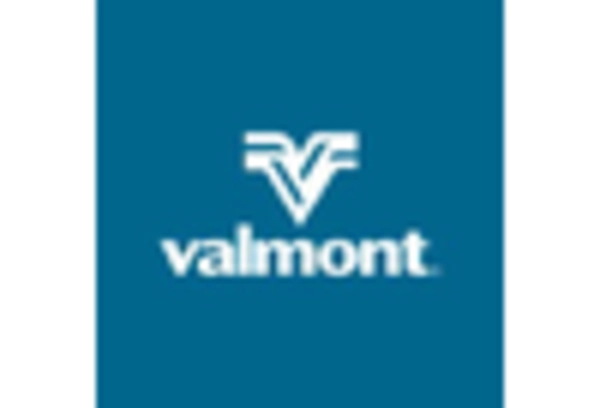Market Analysis
In-depth Analysis of Crash Barrier Systems Market Industry Landscape
The Crash Barrier Systems Market is changing due to variables that affect supply and demand. Transportation infrastructure globally relies on crash barrier devices to reduce vehicle crashes and improve road safety. The growing focus on road safety drives market dynamics. Crash barrier systems are being prioritized by governments and transportation authorities worldwide to minimize accidents and protect motorists, improving market dynamics.
The crash barrier system market is heavily influenced by building and infrastructure development. Effective barrier solutions are needed as urbanization and highways grow. Guardrails and median barriers are essential to road infrastructure, affecting construction and infrastructure market dynamics.
Regulatory standards and safety demands drive crash barrier system adoption, affecting market dynamics. Crash barriers are required by road safety regulations globally to avoid accidents and improve safety. Market dynamics depend on compliance with these restrictions, affecting crash barrier system demand across geographies.
Another major crash barrier system market driver is the automotive industry. Vehicle safety regulations are changing, increasing demand for crashworthy barriers. Crash barrier devices protect occupants and reduce vehicle and infrastructure damage. The car industry's focus on safety ratings boosts market dynamics by boosting demand for sophisticated crash barrier technologies.
Crash barrier systems market dynamics are shaped by material and technology innovation. Crash barrier manufacturers are investing in R&D to improve impact resistance, durability, and cost. High-strength steel and composite materials improve crash barrier system performance and lifetime, affecting market supply dynamics.
Environmental concerns and sustainability are increasingly impacting crash barrier systems market dynamics. Barrier systems are increasingly using recyclable and eco-friendly materials. Sustainable manufacturers delivering eco-friendly crash barrier systems can affect market dynamics by addressing the growing need for environmentally friendly products.
Smart transportation and infrastructure are changing market dynamics by incorporating technology into crash barrier solutions. Advanced crash barrier systems with sensors, communication devices, and automated functions improve road safety by monitoring traffic in real time. Technology in crash barrier systems supports smart infrastructure development, improving market dynamics.
Manufacturing, quality control, and industry standards affect market dynamics on the supply side. Manufacturers that prioritize fast production, tight quality control, and safety requirements help meet crash barrier system demand. Delivering reliable and high-performance crash barrier technologies affects market supply dynamics.

















Leave a Comment